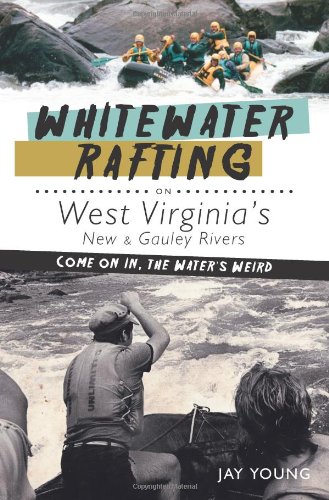-
B is for Buckaroo: A Cowboy Alphabet
Gleaves Whitney, Louise Doak Whitney, Susan Guy
Paperback (Sleeping Bear Press, Dec. 15, 2006)"L is for lariat or lasso, a loop of rope coiled just so. Swing it wide or swing it low. Hook those horns and yell whoa!" Hold on to your hat and strap on your spurs! Cowpokes and buckaroos of all ages will enjoy this A-Z gallop through the facts, feats, and folks of the cowboy way of life. Even greenhorns are invited to ride this fun-filled range! Q
Q
-
Wrigley Field: 100 Stories for 100 Years
Dan Campana, Rob Carroll, Dan Roan, Kerry Wood
Paperback (The History Press, Nov. 5, 2013)Charge through the turnstiles of this collection of personal stories about baseball's greatest ballpark and the sacred space it occupies in the hearts of Cubs fans and the soul of Wrigleyville. With contributors like Bob Costas, Rick Sutcliffe and Steve Stone, this informal oral history salutes the legacy that has made Wrigley such an unforgettable part of baseball and Chicago for the last century. These one hundred stories reflect the variety of millions of Cubs fans around the world, from those whose relationship with the Friendly Confines has lasted a lifetime to those who are taking their seats up close to the ivy for the very first time.
-
B is for Buckaroo: A Cowboy Alphabet
Louise Doak Whitney, Gleaves Whitney, Susan Guy
Hardcover (Sleeping Bear Press, Sept. 13, 2003)"L is for lariat or lasso, a loop of rope coiled just so. Swing it wide or swing it low. Hook those horns and yell whoa!" Hold on to your hat and strap on your spurs! Cowpokes and buckaroos of all ages will enjoy this A-Z gallop through the facts, feats, and folks of the cowboy way of life. Even greenhorns are invited to ride this fun-filled range! R
R
-
Hockey Numbers
Matt Napier, Melanie Rose
Board book (Sleeping Bear Press, Sept. 17, 2007)Thick, sturdy pages combined with short, easy-to-read sentences introduce young hockey fans to numbers found at the game, from two goalies to eight ticket stubs. L
L
-
Whitewater Rafting on West Virginia's New & Gauley Rivers:: Come on In, the Water's Weird
Jay Young
Paperback (The History Press, July 14, 2011)A certain mixture of whimsy and derring-do is required to shove off down (or up) the New or Gauley River with scant protection aside from a helmet, life vest and one's compatriots. It's a choice that could be so easily avoided, but that wouldn't make sense to the proud and colorful characters who have long been shooting these rapids, some of the most popular and treacherous in the country. Here, Jay Young, a raft guide turned writer, leads readers through the local lore and history of the rivers, where--much to the delight of those brave enough to face these rapids--the ordinary almost never occurs.
-
Balls, Birdies & Pucks
Mary Elizabeth Salzmann
Library Binding (Sandcastle, Aug. 1, 2011)Introduces different types of balls and gear that are used in sports, including tennis balls, soccer balls, and hockey pucks. N
N
-
Hockey Numbers
Matt Napier, Melanie Rose
Board book (Sleeping Bear Press, June 9, 2009)Crowd favorite Hat Tricks Count now skates in as a new boardbook, Hockey Numbers. Young sports fans see numbers everywhere from the 2 goalies to 8 ticket stubs and the number of pucks in the final net! L
L
-
Early Skiing on Snoqualmie Pass
John W. Lundin, Dave Moffett
Paperback (The History Press, Oct. 16, 2017)Relive the exciting early days of skiing when Snoqualmie Pass was the epicenter of the sport. Ski jumping tournaments attracted world-class competitors to Cle Elum, Beaver Lake on the Summit and the Milwaukee Ski Bowl. The Mountaineers' twenty-mile race from Snoqualmie to Stampede Pass, dubbed "the world's longest and hardest race," was a pinnacle of cross-country skiing. Alpine skiing began in private ski clubs and expanded in 1934 with the country's first municipal ski area, known as the Seattle Municipal Ski Park. And the sport peaked when the Milwaukee Ski Bowl at Hyak opened in 1938. With train access, a modern ski lodge, an overhead cable lift and free ski lessons from the Seattle Times, the Ski Bowl revolutionized local skiing. Lawyer and local ski historian John W. Lundin follows the historic tracks through the genesis of American skiing.
-
Japanese American Baseball in California: A History
Kerry Yo Nakagawa, Noriyuki "Pat" Morita, Tom Seaver
Paperback (The History Press, July 29, 2014)Four generations of Japanese Americans broke down racial and cultural barriers in California by playing baseball. Behind the barbed wire of concentration camps during World War II, baseball became a tonic of spiritual renewal for disenfranchised Japanese Americans who played America's pastime while illegally imprisoned. Later, it helped heal resettlement wounds in Los Angeles, San Francisco, the Central Valley and elsewhere. Today, the names of Japanese American ballplayers still resonate as their legacy continues. Mike Lum was the first Japanese American player in the Major Leagues in 1967, Lenn Sakata the first in the World Series in 1983 and Don Wakamatsu the first manager in 2008. Join Kerry Yo Nakagawa in this update of his 2001 classic as he chronicles sporting achievements that doubled as cultural benchmarks.
-
Gloves, Mitts & Pads
Mary Elizabeth Salzmann
Library Binding (Sandcastle, Sept. 1, 2011)"SandCastle level: transitional"--T.p. verso. D
D
-
Helmets, Masks & Goggles
Mary Elizabeth Salzmann
Library Binding (Sandcastle, Sept. 1, 2011)Introduces different types of protective gear for sports, including football helmet, ski helmet and goggles, and swim goggles. O
O
-
Historic Hoosier Gyms:: Discovering Bygone Basketball Landmarks
Kyle Neddenriep
Paperback (The History Press, Dec. 8, 2010)Kick snow from your shoes and step into the warmth of the old Hoosier high school basketball gym, where farmers in overalls line the court and students heckle referees from planks above the bleachers. Revisit a unique era when nearly every town had a high school and its own basketball team. The gyms featured here no longer host high school games, but once they were home to the Ladoga Canners, the Mecca Arabs, the Roll Red Rollers, the Arlington Purple Breezes, the Warren Lightning Five and dozens more. Now they are elementary schools, community centers, fire stations, churches. Some are homes. Sadly, others are wasting away. But once again, the ball thuds in these gyms. The screams reverberate. The whistles blow. Join the Indianapolis Star's Kyle Neddenriep on this tour of one hundred former Hoosier high school basketball gyms.